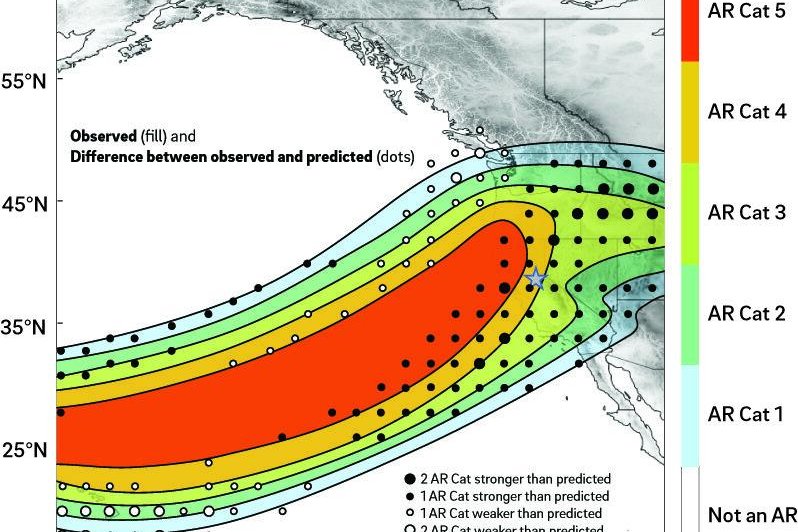Smaller, weaker atmospheric rivers are mostly beneficial, bringing restorative rains, but larger, slower-moving rivers can cause damaging floods. Photo by CW3E/Scripps Institution of Oceanography at UC San Diego
Feb. 6 (UPI) -- Scientists have unveiled a new weather scale designed to characterize the size and strength of atmospheric rivers, long bands of water vapor carried by fast high-altitude winds.
For the Western United States, the atmospheric rivers that flow across the Pacific are a blessing and a curse. In California, the succession of winter rain storms delivered by atmospheric rivers help keep reservoirs filled, but they can also trigger devastating floods.
In California's Central Valley, some 80 percent of levee breachers are caused by atmospheric rivers.
To help local communities, first responders, policy makers and other decision makers better prepare for their impacts, a team of scientists led by researchers at the Scripps Institution of Oceanography at the University of California San Diego developed an intensity scale to describe the strength of atmospheric rivers.
"This scale enables improved awareness of the potential benefit versus hazard of a forecast AR," researcher Michael Anderson of the California Department of Water Resources said in a news release. "It can serve as a focal point for discussion between water managers, emergency response personnel and the research community as these key water supply and flood inducing storms continue to evolve in a changing climate."
Like the scale used to grade hurricanes, the new scale uses numbers 1 through 5 to characterize the river's strength. The scale also uses corresponding categories: weak, moderate, strong, extreme and exceptional.
Two main factors determine an atmospheric river's grade: the amount of water vapor it's carrying and the amount of time it takes for a river to move across a specific area.
Rivers that take less than 24 hours to cross an area are downgraded a single category. If a river stalls, taking more than 48 hours to pass through an area, it's upgraded.
The scale's emphasis on speed sets it apart from the scale used to categorize hurricanes, which has been criticized for failing to communicate the risks posed by relatively weak but slow-moving hurricanes.
According to the new scale, category one and two atmospheric rivers are beneficial. Their replenishing rains are much needed across much of the West. But as the rivers move up the scale, the risks begin to outweigh the benefits. Category three rivers can refill reservoirs but also cause river heights to near flood levels.
According to the scale, category four rivers, or extreme rivers, are "mostly hazardous," while category five rivers, or exceptional rivers, are "primarily hazardous."
"The scale recognizes that weak ARs are often mostly beneficial because they can enhance water supply and snow pack, while stronger ARs can become mostly hazardous, for example if they strike an area with conditions that enhance vulnerability, such as burn scars, or already wet conditions," said F. Martin Ralph, director of the Center for Western Water and Weather Extremes at Scripps. "Extended durations can enhance impacts."
Ralph, the scale's primary creator, and his colleagues published the new scale this week in the Bulletin of the American Meteorological Society.
"The concept of ARs has directly benefited NWS operations in the West through better scientific understanding, more accurate precipitation forecasts, and a better vehicle for communicating impacts to our partners," said Jon Rutz, a meteorologist at the National Weather Service who assisted in the scale's creation. "The AR scale is a significant step forward, providing forecasters with a tool to distinguish between primarily beneficial and primarily hazardous storms. I anticipate that this scale will be adopted and highly used."















